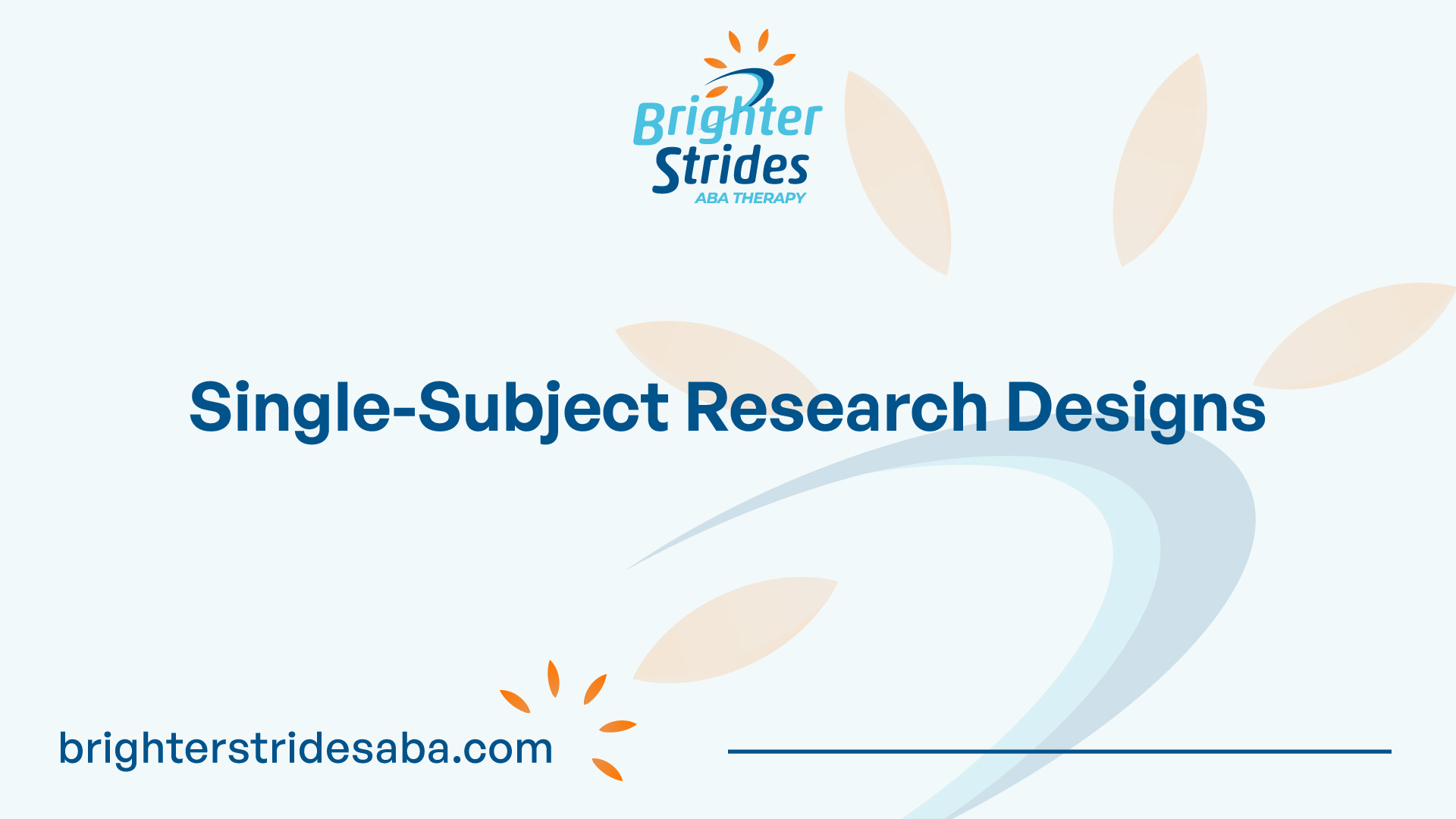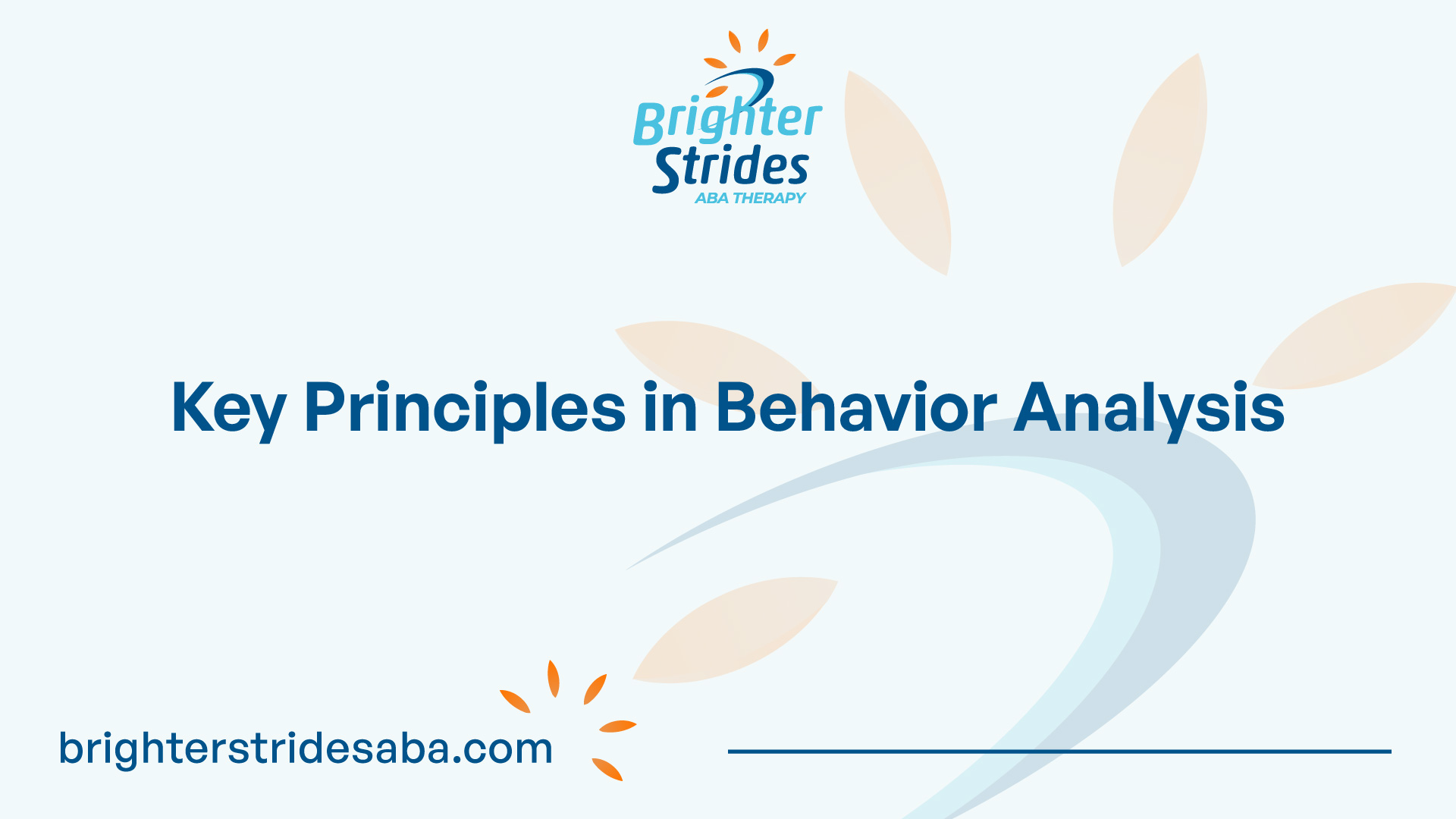
Understanding ABA Research Methods
To fully grasp the effectiveness of Applied Behavior Analysis (ABA) as a therapeutic approach, it’s important to explore the research methods employed within the field. In this section, we will provide an overview of ABA and discuss the role of Board Certified Behavior Analysts (BCBAs) in conducting ABA research.
An Overview of ABA
Applied Behavior Analysis (ABA) is a scientific discipline that systematically applies procedures derived from the principles of behavior to improve socially significant behavior and demonstrate experimentally that the procedures employed were responsible for the improvement in behavior. ABA focuses on understanding and modifying behavior to promote positive changes that enhance daily living, particularly for individuals with autism and autism spectrum disorders.
ABA interventions are designed based on careful assessments and data analysis to address behavioral issues and promote skill development. By identifying the function of behavior and implementing evidence-based strategies, ABA aims to shape behavior, improve communication and social skills, and enhance overall quality of life.
Role of BCBA in ABA
A Board Certified Behavior Analyst (BCBA) plays a pivotal role in the field of ABA. These trained professionals specialize in behavior analysis, assessing, analyzing, and providing interventions to address behavioral issues and promote positive behavior changes. BCBAs possess extensive knowledge of behavior analysis principles and techniques, allowing them to design effective ABA programs tailored to individual needs.
BCBAs apply their expertise to develop comprehensive behavior support plans and treatment protocols that outline specific goals and strategies for behavior change. These plans are often implemented by ABA therapists or technicians under the supervision of BCBAs to ensure consistent and effective delivery of interventions. The detailed treatment plans developed by BCBAs allow for easy replication and maintenance of behavior modifications, even outside of clinical or educational settings.
In addition to developing and overseeing ABA intervention programs, BCBAs also contribute to the advancement of ABA research. They actively participate in conducting research studies, collecting data, and analyzing outcomes to evaluate the effectiveness of different interventions and refine best practices. Through their dedication and expertise, BCBAs contribute to the growth and development of the ABA field.
Understanding the role of BCBAs and the research methods employed in ABA is crucial for comprehending the effectiveness and evidence-based nature of ABA interventions. By integrating research findings with clinical expertise and client values, ABA continues to evolve and provide valuable insights into behavior change and skill acquisition for individuals with diverse needs.
Effective ABA Intervention Strategies
When it comes to implementing effective ABA research methods, understanding the fundamentals of behavior analysis, the functions of behavior, and the importance of early ABA therapy are essential.
Behavior Analysis Fundamentals
Applied Behavior Analysis (ABA) is a scientific approach that involves the systematic application of behavioral principles to bring about meaningful behavior change. ABA is widely recognized as an evidence-based practice for individuals with autism and other developmental disabilities.
The seven dimensions of ABA, supported by scientific-based research, provide a comprehensive framework for effective intervention [2]. These dimensions include:
- Applied: ABA focuses on socially significant behaviors, aiming to improve the individual’s quality of life.
- Behavioral: The focus is on observable and measurable behaviors rather than underlying thoughts or emotions.
- Analytic: ABA relies on data collection and analysis to evaluate the effectiveness of interventions.
- Technological: Interventions are described in clear and concise terms to allow for replication and implementation by others.
- Conceptually Systematic: ABA interventions are based on established principles of behavior analysis.
- Effective: Interventions should result in meaningful and significant behavior change.
- Generality: The goal is to promote behavior change that extends beyond the intervention setting and produces lasting effects.
Functions of Behavior
To develop effective intervention plans, ABA therapists and behavior analysts must understand the functions of behavior. The four main functions of behavior, as identified by ABA research, are:
- Escape: Some individuals engage in challenging behavior to escape or avoid a task or situation they find difficult or aversive.
- Access: Behaviors can serve as a means to gain access to preferred items, activities, or attention.
- Attention: Attention-seeking behaviors are used to obtain social interaction or recognition from others.
- Automatic Reinforcement: Some behaviors occur because they are intrinsically reinforcing or provide sensory stimulation.
By identifying the underlying function of a behavior, ABA professionals can develop targeted intervention strategies that address the specific needs of the individual. This approach allows for the reduction of challenging behaviors and the replacement with more appropriate alternatives.
Importance of Early ABA Therapy
Starting ABA therapy as early as possible is crucial for achieving the best outcomes, particularly for children with autism spectrum disorder (ASD). Research shows that beginning ABA therapy before the age of four can significantly enhance children’s development, improving social and communication skills.
Early and intensive behavioral intervention (EIBI) programs, based on ABA principles, have shown strong empirical support for the treatment of autism. These programs aim to reduce problem behaviors associated with autism and replace them with appropriate communication, social, play, academic, and independent living skills.
A study conducted by Lovaas in the 1970s revealed that children who participated in ABA treatment for 40 hours per week over 2-3 years showed significant improvements compared to a control group. The study found that 47% of the children who received ABA treatment reached normal intellectual and educational functioning, compared to only 2% of the control group.
Early ABA therapy provides children with the opportunity to develop essential skills and reach their full potential. Through targeted interventions based on behavior analysis, early intervention programs can help children with autism improve their cognitive abilities, language skills, social interactions, adaptive behaviors, and overall well-being [3].
Understanding behavior analysis fundamentals, the functions of behavior, and the significance of early ABA therapy lays the groundwork for effective intervention strategies. By applying these principles, ABA professionals can make a positive impact on the lives of individuals with autism and other developmental disabilities.

Single-Subject Research Designs
Single-subject research designs play a crucial role in ABA research methods, allowing for the evaluation of interventions and the analysis of individual participant data. In this section, we will explore the basics of single-subject research, the different phases involved, and the data analysis techniques used.
Basics of Single-Subject Research
Single-subject research is a study method in which the researcher gathers data on a baseline state, introduces the treatment, and continues observation until a steady state is reached. This design allows for the analysis of individual behavior patterns and the evaluation of specific interventions [4].
The baseline phase serves as a control condition, representing the level of responding before any treatment is introduced [4]. By establishing a stable baseline, any subsequent changes in behavior can be attributed to the treatment being implemented.
Phases in Single-Subject Research
Single-subject research typically consists of distinct phases, each with a specific purpose. The most common phases include:
- Baseline Phase: This initial phase establishes the participant’s baseline behavior, serving as a reference point for evaluating the effects of the intervention.
- Treatment Phase: In this phase, the researcher introduces the treatment or intervention being studied. The effectiveness of the treatment is assessed by comparing the participant’s behavior during this phase to the baseline data.
- Withdrawal Phase: Also known as the reversal phase, the withdrawal phase involves removing the treatment to determine if the behavior returns to the baseline level. This phase helps establish a causal relationship between the treatment and the observed changes in behavior.
It’s important to note that the number of phases and their order may vary depending on the specific research design and goals.
Data Analysis in Single-Subject Research
Data analysis in single-subject research involves the systematic evaluation of the participant’s behavior over time. Graphing individual participants’ data is a common practice in single-subject research, allowing researchers to visually analyze trends and patterns.
The analysis focuses on examining the data and making judgments about the extent to which the treatment had an effect on the dependent variable. Visual inspection of the data helps identify changes in behavior and assess the effectiveness of the intervention.
To quantify the effectiveness of behavioral interventions, researchers calculate effect sizes and may conduct meta-analyses of single-case research. This allows for the aggregation of single-case design research to demonstrate the efficacy of interventions for participants with similar characteristics.
Single-subject research designs are valuable tools in ABA, providing researchers with the ability to evaluate interventions at an individual level. The rigorous analysis of data from single subjects contributes to the development of evidence-based practices and informs the design of effective ABA therapy programs.
Evidence-Based Practice in ABA
When it comes to ABA research methods, evidence-based practice (EBP) plays a crucial role in guiding decision-making and improving outcomes. EBP in applied behavior analysis (ABA) is defined as a decision-making process that integrates the best available evidence with clinical expertise and client values and context. This approach promotes clear communication about treatment decisions and aligns with the foundations of ABA [6].
Definition of EBP
In various professions, including nursing, social work, clinical and educational psychology, speech and language pathology, the concept of evidence-based practice has gained traction. The federal department of education has also embraced the EBP framework to guide decision-making and enhance outcomes. EBP aims to bridge the gap between research and practice by incorporating research evidence into clinical decision-making.
Integration of Evidence, Expertise, and Client Values
EBP in ABA emphasizes the integration of three key components: evidence, expertise, and client values and context. The best available evidence is derived from systematic research, including experimental studies, single-subject designs, and meta-analyses. Clinical expertise refers to the proficiency and experience of the behavior analyst in applying ABA principles and strategies. Client values and context consider the unique needs, preferences, and circumstances of the individual receiving ABA services.
By integrating these components, behavior analysts can make informed decisions about interventions and treatment plans that are tailored to each client’s specific needs. The collaborative nature of EBP ensures that the client’s goals, values, and preferences are central to the decision-making process, ultimately leading to more effective and meaningful outcomes.
Significance of EBP in ABA
The importance of EBP in ABA cannot be overstated. Historically, there has been a gap between research findings and their implementation in real-world settings where behavior analysts work. Despite the existence of effective interventions, many current practices do not utilize them, resulting in suboptimal outcomes. EBP aims to bridge this gap and ensure that evidence-based interventions are systematically implemented to improve the quality of services provided by behavior analysts [6].
By embracing EBP, behavior analysts can enhance the effectiveness and efficiency of their interventions, making a positive impact on the lives of individuals receiving ABA services. EBP promotes accountability, transparency, and continuous learning within the field of ABA, contributing to the growth and advancement of evidence-based practices. It empowers behavior analysts to critically evaluate the evidence, integrate their expertise, and consider the unique needs and values of their clients, ultimately leading to better outcomes in behavior change and skill acquisition.
In conclusion, evidence-based practice is a cornerstone of effective ABA research methods. By integrating the best available evidence, clinical expertise, and client values and context, behavior analysts can make informed decisions that optimize outcomes for individuals receiving ABA services. Through the application of EBP principles, the gap between research and practice can be bridged, leading to more effective and meaningful interventions in the field of ABA.

Key Principles in Behavior Analysis
When exploring behavior analysis, it is important to understand the key principles that guide this scientific field. These principles include determinism, empiricism, experimentation, and replication.
Determinism in Behavior Analysis
Determinism in behavior analysis refers to the belief that events occur in an orderly and predictable manner, rather than happening randomly. It emphasizes the idea that behavior is influenced by various factors and is not solely the result of chance or luck. For instance, the growth of flowers in a garden due to frequent rain and seasonal changes is an example of determinism in action. By recognizing determinism, behavior analysts can analyze and understand the factors that influence behavior and develop effective ABA behavior support plans.
Empiricism in Behavior Analysis
Empiricism in behavior analysis involves the objective observation of events using information from the five senses only. It rejects knowledge based on mystical powers or subjective feelings. Empiricism emphasizes the importance of experimentation and experience as sources of knowledge. By relying on empirical evidence, behavior analysts can make informed decisions and develop effective ABA skill training and behavior change interventions.
Experimentation and Replication
Experimentation and replication are fundamental in behavior analysis. Experimentation involves manipulating independent variables to observe their effects on dependent variables, demonstrating functional relations. This process is essential for scientific inquiry and contributes to the knowledge base in behavior analysis. By conducting experiments, behavior analysts can develop evidence-based ABA therapy curriculum and refine intervention strategies.
Replication plays a crucial role in behavior analysis as well. It involves repeating experiments to determine the reliability and usefulness of findings. By replicating studies, behavior analysts can identify any potential mistakes, validate previous research, and ensure the credibility of scientific results. Replication is a vital component of the self-correcting nature of science within the field of behavior analysis.
Understanding these key principles provides a foundation for conducting rigorous research and developing effective interventions in behavior analysis. By embracing determinism, empiricism, experimentation, and replication, behavior analysts can contribute to the growth and advancement of the field, providing individuals with evidence-based ABA therapy results and promoting positive behavior change.
Advancements in ABA
As Applied Behavior Analysis (ABA) continues to evolve, advancements in the field have led to a wide range of applications in various settings, an increase in the number of ABA practitioners, and a focus on addressing criticisms and ensuring social validity.
ABA Applications in Various Settings
ABA interventions have proven to be remarkably diverse, catering to individuals of all ages in various settings. These interventions have been implemented in homes, schools, nursing homes, facilities for delinquents, psychiatric patients, and more. The scope of ABA interventions encompasses medical, psychological, and educational objectives. By utilizing evidence-based strategies, ABA has been effective in promoting positive behavior change and improving the lives of individuals across different contexts.
Growth of ABA Practitioners
The field of ABA has experienced exponential growth in the number of practicing behavior analysts. At present, there are approximately 55,000 behavior analysts worldwide, a significant increase from nearly 20,000 in 2015 and only 6,900 in 2010 [5]. This growth highlights the increasing recognition and demand for ABA interventions and the valuable contributions made by behavior analysts in improving the lives of individuals with behavioral challenges.
Addressing Criticisms and Social Validity
The field of ABA recognizes the importance of addressing criticisms and ensuring social validity. Recent feedback from consumers of behavior analytic services has raised concerns about the potential dehumanizing and abusive nature of some practices, particularly in the field of autism. To maintain ethical standards and foster positive outcomes, behavior analysts are actively responding to these concerns by prioritizing social validity and incorporating qualitative research methods. By augmenting single-case design research with qualitative approaches, behavior analysts can investigate a wide variety of topics relevant to society and ensure that interventions are meaningful and respectful to individuals’ needs and values [5].
With ongoing advancements and a commitment to addressing concerns, ABA continues to refine its practices and further establish itself as a valuable discipline for promoting positive behavior change, enhancing quality of life, and achieving socially significant outcomes. By staying at the forefront of research and practice, behavior analysts can continue to make a difference in the lives of individuals across diverse populations and settings.

 We've just released an article!
Check out our blog!
We've just released an article!
Check out our blog!



